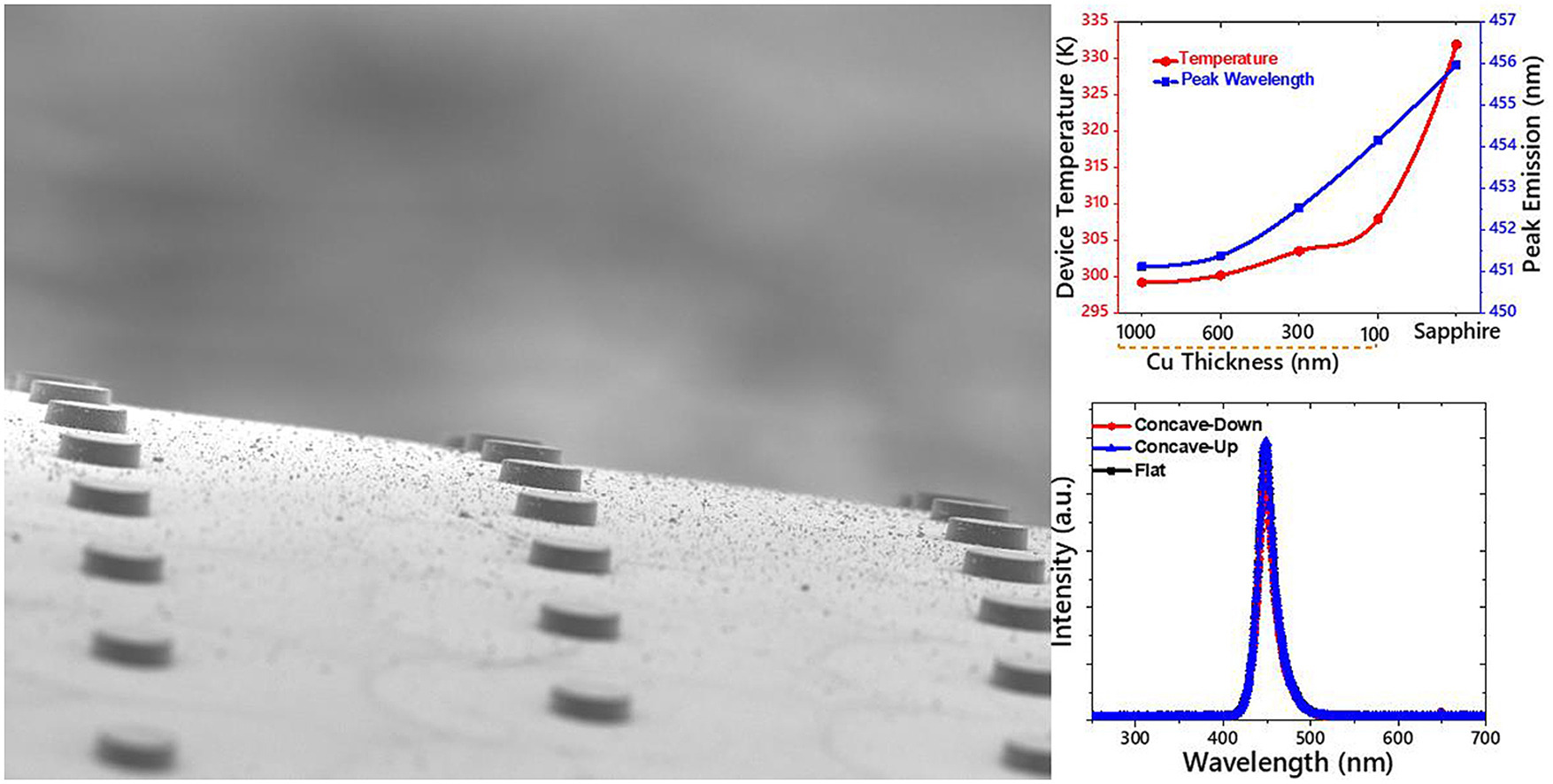Researchers at the University of Waterloo in Canada reported that they have created a new method to transfer and bond Micro LEDs onto flexible substrate. The approach is called “paste-and-cut” by the researchers and can selectively transfer GaN Micro LED from sapphire substrate onto flexible platforms. The results were published at Nano Energy in July, 2020.
The research team unveiled their achievement of using the novel “paste-and-cut” approach to transfer and bond GaN Micro LEDs onto flexible substrate with demonstrated effectiveness. The technique first bond Micro LEDs on wafer onto a glass substrate and release them onto the flexible substrate. A novel pixel circuit is able to compensate induced current degradation in the pixel circuit due to operational aging and mechanical bending.

(Image: University of Waterloo)
With the method, the team managed to process Micro LED chips of 20 µm without degradation. According to the researchers, this technology enables production of large-area flexible and conventional rigid displays with Micro LEDs.
The novel design and integration process also enables stable light intensity for extended operating lifetimes while the display is under mechanical bending. The circuit has been demonstrated and initial measurement results demonstrate the efficacy of the design and fabrication process compared to conventional pixel circuits for OLED displays. In addition, the technology takes advantage of existing amorphous silicon TFT technology that leverages a mature and developed pathway for commercialization.
At 2020 Micro LED Forum, TrendForce and LEDinside also invited leading technology builders to share thier advanced technology progresses and innovative applications for novel display technology, Micro LED and Mini LED. See more at: 2020 Micro LED Forum: Opportunities and Challenges for Mass Production of Emerging Display Technologies. Register now to get an early bird discount!






 CN
TW
EN
CN
TW
EN







